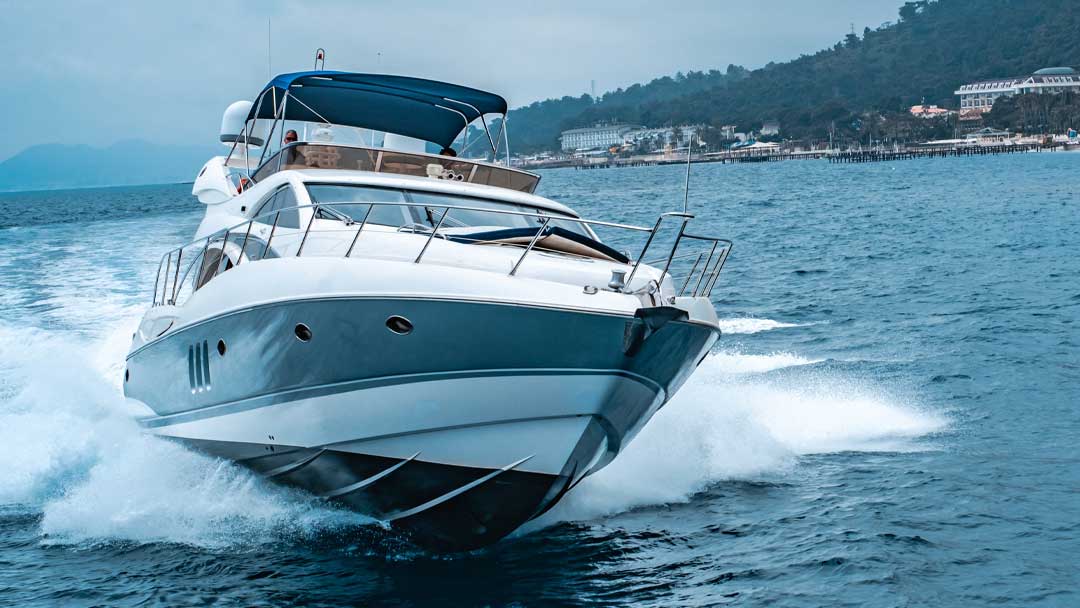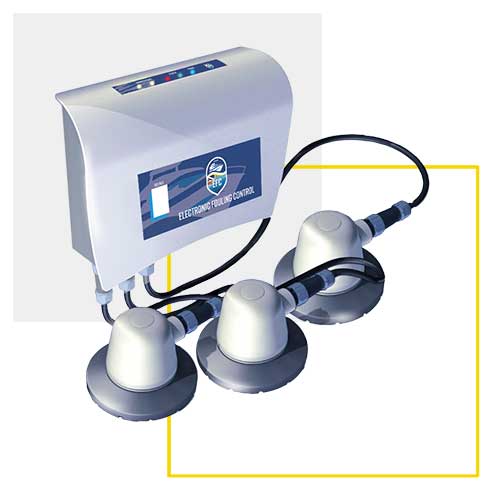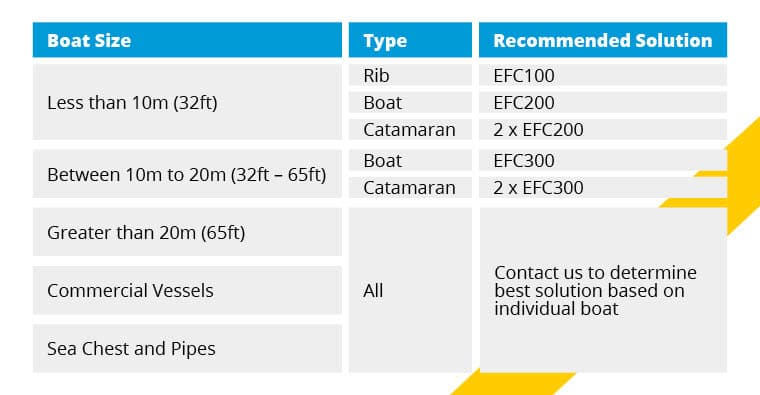When it comes to owning a yacht people often dream about the trips they can take in their new vessel but can often forget about the maintenance side of things. One of the biggest maintenance jobs for any boat owner is antifouling – a technique used to prevent barnacles, algae and other marine life from attaching to the hull. This blog is full of advice for when you need to antifoul your boat in order to keep it seaworthy.
Do I need to antifoul my boat?
In short, yes, you need to antifoul your boat if you plan to use it in the water. Antifouling is one of the most important things a boat owner can do, even if it is one of the worst jobs!
It is how you can help prevent barnacles on your boat hull. Antifoul helps to prevent the attachment and build up of marine growth on the hull, particularly along the water line, rudders and propellers. This improves fuel consumption (reducing your running costs), improve water flow and can even increase the top speed of your vessel. Looking after the hull of your boat properly can also improve the lifetime of it and reduce the likelihood of engine issues around the water inlet and outlets.
How often should I antifoul my boat?
The process of antifouling a boat is labour intensive so minimising this is a priority for many boat owners. How often should you antifoul your boat? Typically most boats need antifouling once a year
- Regular scrubbing or power washing the hull can increase the lifespan of your antifouling.
- Using your boat regularly to prevent it sitting in water for too long can also help prevent biofouling accumulation on the waterline.
- Whether your boat is moored in fresh or salt water can also impact the longevity of your antifouling.
- The size of your boat and the type of antifouling paint used can also affect how often you need to do it.
What is the best antifouling for boats?
When deciding on the best antifouling for boats you need to be aware of the different types of antifouling available. The most common types of antifouling are applied as antifouling paint in a gel coat. There are two main types of antifouling paint:
Self Eroding
Often referred to as a ‘soft antifouling’ system, eroding paints works by slowly eroding throughout a sailing season, ensuring that a fresh film of biocide is always present to prevent marine growth. Generally, this is recommended for boats with speeds of less than 25 knots.
Hard
Typically suitable for higher-speed vessels such as race boats (30 knots+), hard paints constantly release biocides, and don’t wear away in the same way as soft or self-eroding antifoul options.
However, most antifoul paints contain copper oxide, a chemical substance that acts as a biocide to kill the marine life that tries to attach to it. But, you’ve guessed it, this means that it is also extremely toxic to other sea life and use and disposal of these paints should adhere to strict guidelines laid out by the British Coatings Federation.
Furthermore, if you have a boat with an aluminium hull it is really important that you don’t apply a copper-based antifoul paint as the copper reacts with aluminium hulls causing them to corrode. You will need to purchase a copper-free antifoul and be sure to use a suitable primer beforehand.
A different approach: Foul-release coating system
An alternative to antifoul that works in a similar way to self-eroding paint is use of foul release coating systems. These work without the use of biocides (pesticides) but are still applied as bottom paint and instead create a surface that is difficult for the marine life to adhere to.
Instead of containing copper they use a specially formulated silicone rubber substance from which the top layers sough off, along with any attached marine life, once the boat is moving through the water. However, many still contain toxic additives and catalysts (including silicone) which have unstudied effects on the environment.
An alternative to annual application of antifouling paint
If you are looking for a truly more eco-friendly antifouling solution then ultrasonic antifouling is the best antifouling for boats. Ultrasonic antifouling uses high frequency sound waves, produced by ultrasonic transducers, to prevent barnacles and other marine foul attaching to the hull. This reduces the need for toxic, copper-based paints which can lead to copper build up in the food chain and damage to other organisms than the ones that may try and stick to your boat.
DIY antifouling – how hard can it be?
If you have the time and tools and are not afraid of a bit of hard work, you can antifoul your boat yourself in order to save money.
Getting started -removing the old paint and cleaning the hull
DIY antifouling involves you removing your boat from the water. Once you haul out your boat you then have to scrape down and jet wash the hull of any significant growth before remove existing paint. The old paint should be wet sanded or removed with the help of paint stripper and the hull dried off.
Specialist PPE should be worn when removing antifouling from your boat hull as the paint is extremely toxic to you and the environment. You will also have to do this in dry weather or undercover in a marina so bear this in mind if you are planning to carry out your antifouling in the winter.
Applying the new paint
The new bottom paint can then be applied, the type and how much antifouling paint you need will depend on the hull and what you use your boat for including the water it will be kept in (salt or fresh water and even where in the world you plan to set sail), the size of your boat and its top speed. It is important to speak to your local chandler if you are unsure of the paint you need – their local knowledge of the water temperature and water conditions can be very useful.
Buying enough paint
As well as being sure to buy the right antifoul paint, you need to ensure you buy enough to complete the job (remember that you will likely need multiple coats) and have a little extra paint spare. A lot of paints will have a guide on the tin to help you ensure to buy enough bottom paint to get the job done.
Special attention needs to be paid with the disposal of any excess paint and even the old paint you remove from the hull in order to adhere to new guidelines by the British Coatings Federation. These guidelines from the British Coatings Federation help protect you, others around you as well as wildlife.
How long does antifouling last?
The length of time your antifoul will last will depend on several factors. Traditionally you need to antifoul your boat every 10-12 months, most people do it annually as it can be a laborious and unpleasant task.
Some key factors will affect how long antifoul lasts;
- The paint type (hard antifouling or ablative, self-polishing or soft) as softer antifoul paint will be more likely to need renewing more regularly as it wears away.
- How often you use your boat – the lifespan of your antifouling can be reduced to just 8-10 months if it is sat on a mooring most of the year as this allows the foul to build up.
- Storage of your boat when you don’t use it, taking it out of the water each time will prevent excessive foul build up that would occur on a mooring.
- Regular maintenance and cleaning of the hull using a pressure washer.
The length of time between antifouling your boat can be significantly increased (up to five times) with the use of electronic fouling systems like our ultrasonic antifouling control products.
Does ultrasonic antifouling work?
Not only is ultrasonic antifouling much better for the environment -reducing the need for regular use of toxic, copper-based traditional antifouling paints – but ultrasonic antifouling does work really well and can be very cost-effective for boat owners!
A series of easy-to-install transducers attach to the hull of your boat with absolutely no through-hull drilling required and the number of which will depend on the size of your boat hull. These connect to a control unit that produce pulses of ultrasonic signals that form a kind of protective shield around the hull of your boat. This pulsating shield prevents marine life from attaching to the hull of your boat.
The signals produced from our ultrasonic antifouling devices aren’t harmful to humans or sea life and provide a much safer and environmentally friendly alternative to traditional antifouling, particularly when powered using the solar panel expansion.
Do you still need to use antifouling paints alongside ultrasonic antifouling technology?
Traditional antifouling does still need to be applied to the hull around the ultrasonic antifouling terminals, however, use of ultrasonic antifouling can increase the lifespan of this to up to five years instead of applying new paint annually – particularly when combined with regular cleaning and regular maintenance of the hull.
How much does it cost to antifoul your boat?
So you’ve paid out for your new vessel but how much does it cost for you to antifoul your boat? Traditional antifouling costs, on average, £300 for a 20 foot boat and around £800 for a 50 foot boat. That is a big expense for boat owners each year.
The correlation between boat length and cost isn’t linear though – more complicated hulls may be more expensive, how well previously looked after your hull is can contribute to the cost if you are paying someone else to do the work for you (or can compound your workload if you’ve opted to do it yourself!).
Is ultrasonic antifouling more cost effective? Well the initial cost is more – £1250, with a solar-powered kit being around £350 on top. But a cleaner hull can increase fuel efficiency by 30% saving you money all year round, on top of the reduced need for annual antifouling. Combined with the eco-friendly credentials of ultrasonic antifouling, we truly believe it is the future of boat care.
What ultrasonic antifouling kits are there?
At EFC we stock a range of ultrasonic antifouling kits available for all sizes of boats. Head straight to our shop if you know which one you need or read on to help you decide which option is best for you and your boat.
For boats less than 10m the EFC200 is recommended, with two required (one per hull) on a catamaran of the same size. For boats between 10 and 20 metres the EFC300 is recommended, again with two required for catamarans of the same size. For any vessels over 20m we recommend getting in contact with us to help determine the best solution for your needs.
Antifouling your boat can be a tedious job but we hope that our handy guides and use of our ultrasonic antifouling systems can make regular antifouling a thing of the past.





